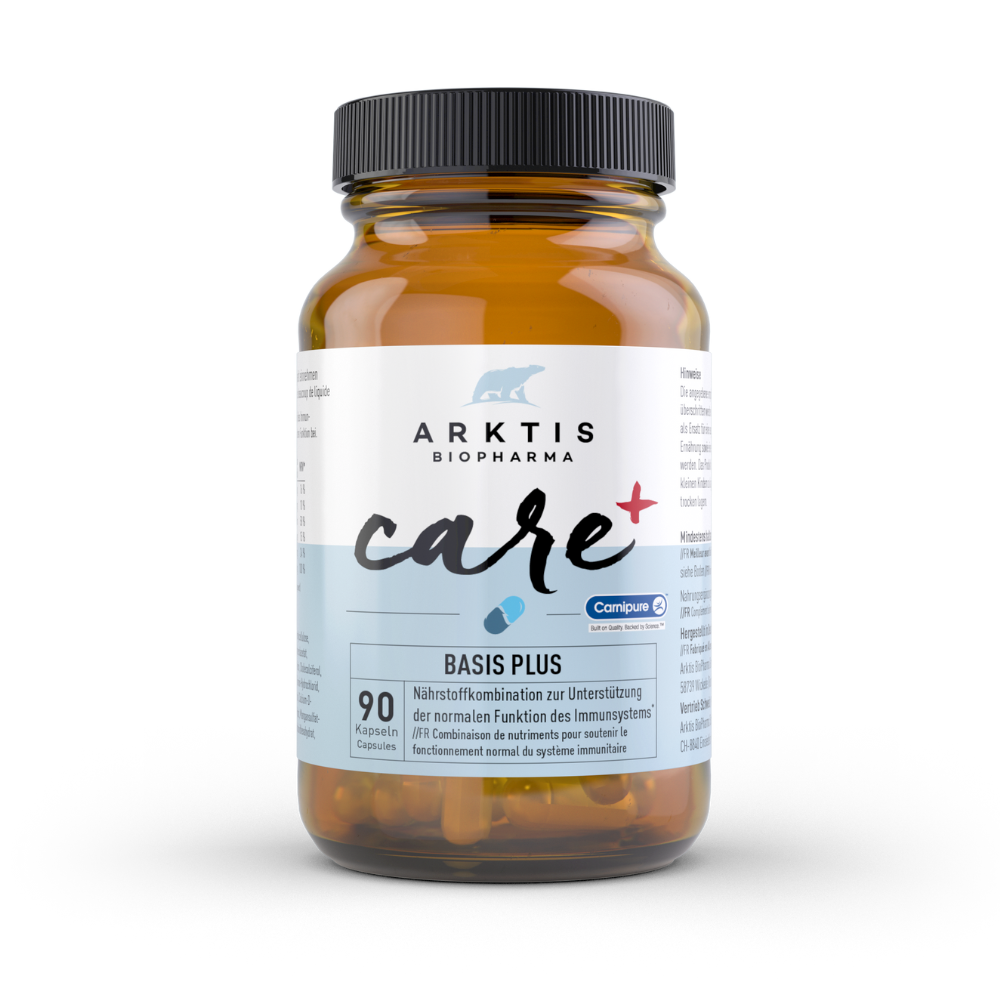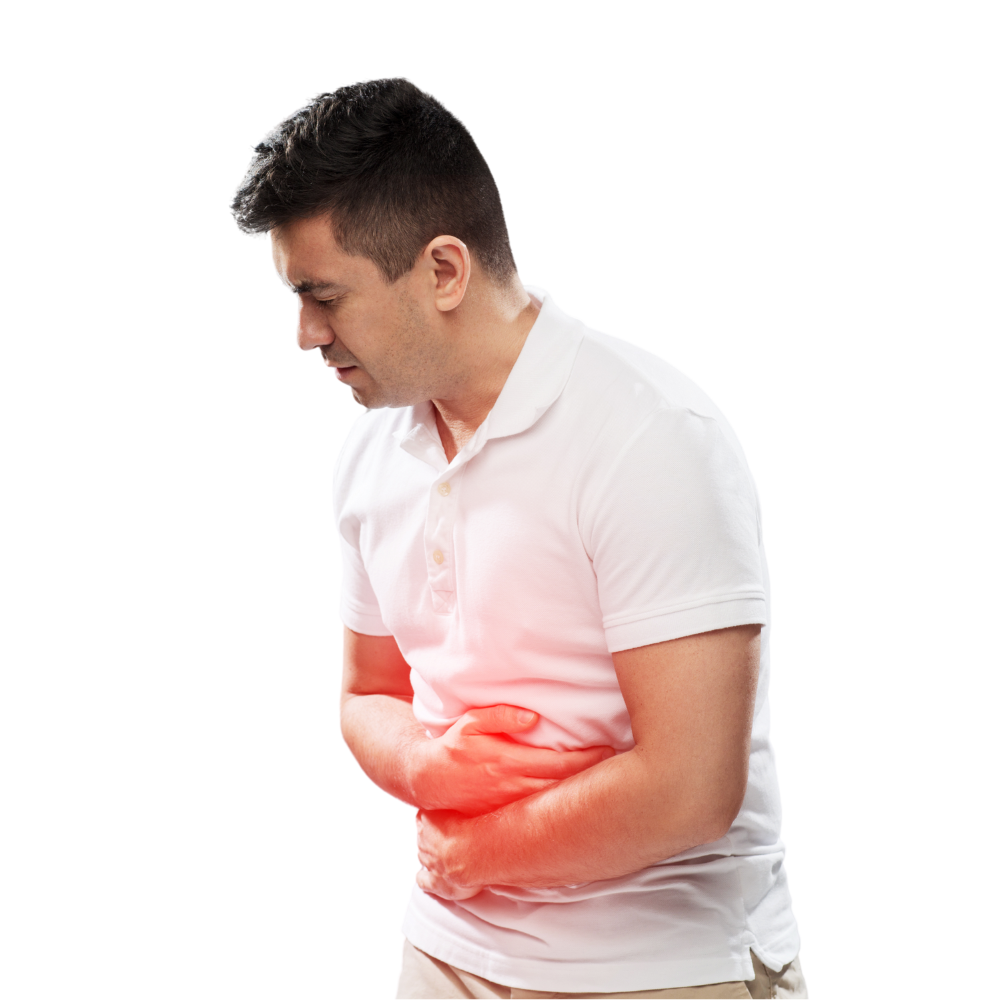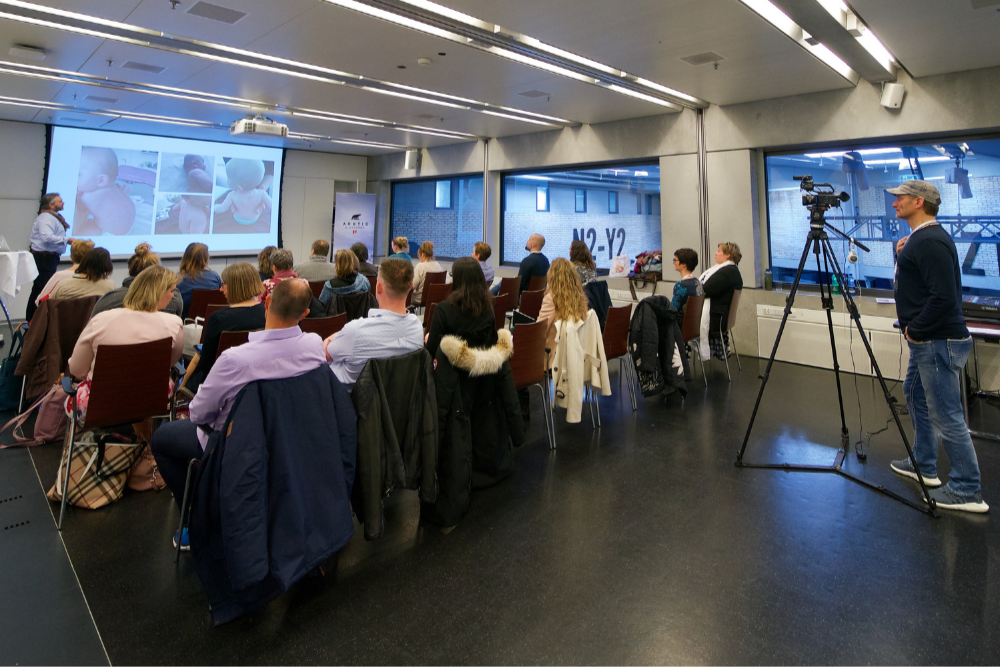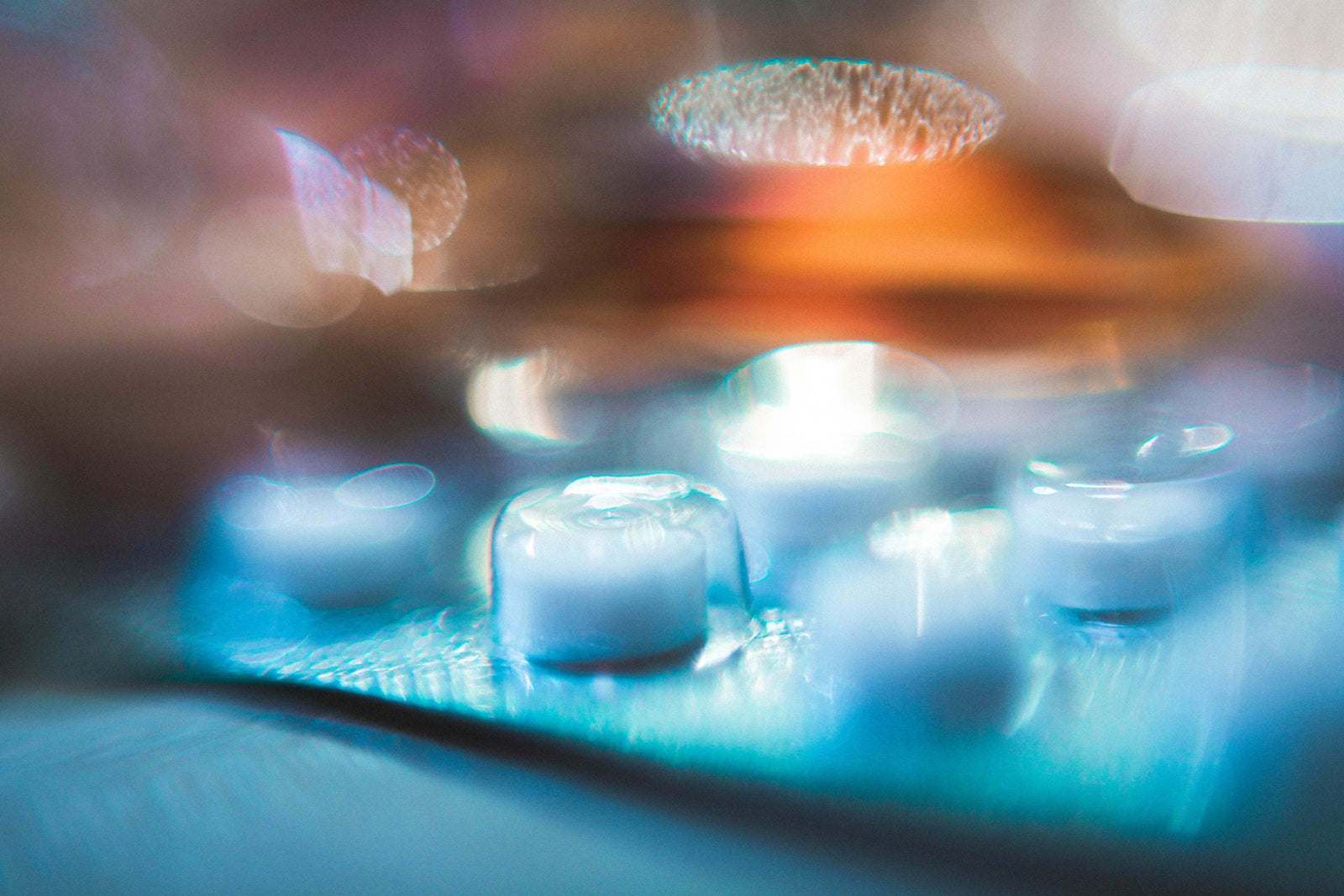How do antibiotics work?
Antibiotics are (usually prescription) drugs that kill pathogenic bacteria or prevent their growth. If bacteria have entered the body and multiply, they can trigger an inflammation. The effectiveness of antibiotics is limited to bacterial infections. However, if the infection is caused by viruses, which is often the case with gastrointestinal complaints and colds, antibiotics are ineffective.
The major disadvantage of antibiotics is that they not only act against harmful pathogens, but also weaken or eliminate beneficial bacteria. Antibiotics should therefore only be prescribed and used when really necessary.
What do I need to bear in mind when taking antibiotics?
The human body is colonized by thousands of different types of bacteria. A bacterial balance is essential for our body. However, antibiotic treatment disrupts this balance. This is because antibiotics are not only effective against pathogens, but also against beneficial bacteria. Beneficial bacteria are those that help us to digest food or produce anti-inflammatory substances.
It is also important to know that taking antibiotics can be associated with side effects. The most common are diarrhea, nausea, gastrointestinal problems and allergic skin reactions. Exactly which side effects occur and to what extent is very individual.
Influence of antibiotics on the intestinal flora
Antibiotics mean "against life" because bacteria are killed. But what comes afterwards? When we have taken a course of antibiotics, not only are the bacteria dead, but the whole intestinal environment changes.
The pH value in the intestine, which should be between 6-6.5, shifts towards 7 and above. This, in turn, promotes the colonization of fungi. This is why many people suddenly develop rashes after taking antibiotics, or why women often develop cystitis.
To give you an idea, let me give you an example from nature: if the pH value in stagnant water becomes too alkaline, a pond gets algae and a pool tips over and becomes cloudy. Most people then add pH Down and/or chlorine. To bring the pH value back down a little, in an acidic direction. Nowadays, more and more people are adding EM products to the water in a pond to improve the pH value. EM are so-called Effective Microorganisms or, in other words, lactic acid bacteria.
This would mean that if we want to improve our pH value again, we could also work with these methods. Unfortunately, lactic acid bacteria are no longer very common in our food, the best known being fermented food such as sauerkraut.

Supplements after antibiotic therapy
After antibiotic therapy, the intestinal flora can be rebuilt by taking supplements. Particularly suitable for this are Lactic acid bacteria, i.e. probiotic, beneficial bacteria.
Before, during and after antibiotic therapy, we particularly recommend our ARKTIBIOTIC Akut probiotic capsules.
ARKTIBIOTIC Premium contains high doses of lactic acid bacteria and valuable vitamin D.
The history of antibiotics
Antibiotics are undoubtedly one of the greatest achievements in medicine. Most of us cannot remember a time when they were not available. In a world without antibiotics, the slightest scratch could mean death, surgery would be far more dangerous and some not even possible, and high-risk patients with chronic conditions or people who have had transplants or joint replacements would be extremely vulnerable. We have also forgotten how rare it was for parents to see all their children reach adulthood.
The existence of microorganisms has been known since the 17th century. We owe their discovery to the ingenuity of Robert Hooke and Antoni van Leeuwenhoek, who succeeded in magnifying objects by a factor of 25 to 250 through the manufacture and use of simple microscopes. [ 1] Nevertheless, it still took over 200 years before microorganisms were recognized as pathogens. Until then, people believed that bad smells could cause illness or that evil spirits could make a person ill.
Towards the end of the 19th century, Robert Koch discovered that a certain germ could cause a certain disease. The proof of the "germ theory" was the achievement of Louis Pasteur. Like Robert Koch, he believed that diseases were caused by microscopic organisms, but this view was controversial in the 19th century and opposed the accepted theory of "spontaneous generation". The theory of spontaneous generation assumed that living organisms could arise from inanimate matter and that such processes were commonplace and took place regularly.
So we now knew that bacteria could cause disease, but there was no way to prevent it. Bacteria could be killed by "pasteurization" - the heating of liquids such as water and milk. Thanks to the observations of Dr. Sauerbruch in Vienna, it became apparent that cleanliness and hand washing significantly reduced the risk of transmission and spread of disease. These measures meant that many illnesses could be avoided. However, if an infection had already occurred, one could only hope for the patient's self-healing powers - i.e. the effect of the immune system.
Antibiotics were not completely unknown. The treatment of microbial infections in ancient Egypt, Greece and China is well documented. [ 2] The modern era of antibiotics began with the discovery of penicillin by Sir Alexander Fleming in 1928. Antibiotics were first prescribed to treat serious infections in the 1940s. [3]
Since then, antibiotics have transformed modern medicine and saved millions of lives, but by the 1950s many of the advances of the previous decade had already been at risk. Resistance to penicillin was already emerging. In response, new beta-lactam antibiotics were discovered, developed and used, restoring confidence in antibiotics. However, in the same decade, the first case of methicillin-resistant Staphylococcus aureus (MRSA) was identified: in the UK in 1962 and in the United States in 1968.
Today, according to the WHO, at least 700,000 people die each year from drug-resistant diseases, including 230,000 from multidrug-resistant tuberculosis. More and more common diseases, including respiratory infections, sexually transmitted infections, intestinal infections and urinary tract infections, are untreatable; life-saving medical procedures are becoming increasingly risky. [4]
[caption id="attachment_14142" align="aligncenter" width="1024"] Source: Pexels[/caption]
Source: Pexels[/caption]
How does antibiotic resistance develop?
Epidemiological studies have shown a direct link between antibiotic consumption and the emergence and spread of resistant strains of bacteria. [ 5] Among bacteria, genes can not only be inherited from relatives, but also acquired from non-relatives. This so-called "horizontal gene transfer" can enable the transfer of antibiotic resistance between different bacterial species. In addition, resistance can occur spontaneously through mutation. [ 6] Antibiotics remove a large part of the bacterial "competition". What remains are resistant bacteria, which can then multiply undisturbed as a result of natural selection.
Although there have been warnings against overuse for decades, antibiotics are overprescribed worldwide. [ 7] In many countries, antibiotics are even unregulated and available over the counter. This lack of regulation leads to antibiotics that are easily accessible, plentiful and cheap, which encourages overuse. The ability to buy such products online has also made them accessible in countries where antibiotics are officially regulated.
Incorrectly prescribed antibiotics also contribute to the promotion of resistant bacteria. Studies have shown that the indication for treatment, the choice of drug or the duration of antibiotic therapy is wrong in 30 to 50 % of cases. [ 8]
Resistance is not only due to overuse in human medicine. Probably the majority of antibiotics are used extensively as growth additives in livestock in both industrialized and developing countries. An estimated 80% of antibiotics sold in the US are used in animals, primarily to promote growth and prevent infection. [9], [ 10] The treatment of livestock with antimicrobials is intended to improve the overall health of the animals and lead to greater yields and a 'higher quality' product. The antibiotics used in livestock are ingested by humans with food. [ 11] The transmission of resistant bacteria to humans through livestock was first identified more than 35 years ago, when high rates of antibiotic resistance in the intestinal flora of both farm animals and farmers were found.
[caption id="attachment_14139" align="aligncenter" width="1024"] Source: Unsplash[/caption]
Source: Unsplash[/caption]
In Switzerland, the use of antibiotics as growth promoters has been banned since 1998. [ 12] Together with Sweden, it was a pioneer in Europe. In Germany, the ban was only enacted in 2006, in the EU in 2008. However, as antibiotics are still permitted as growth promoters in many countries, more and more resistant bacterial strains continue to emerge. The international movement of goods and people ensures that these resistant strains spread everywhere.
The agricultural use of antibiotics also has an impact on the microbiome in the environment. Up to 90% of antibiotics administered to animals are excreted in urine and feces and then spread widely through manure, groundwater and surface runoff. Additionally, in the western and southern United States, tetracyclines and streptomycin are sprayed on fruit trees to act as pesticides. [13] Although this application represents a much smaller proportion of overall antibiotic use, the resulting geographic spread can be substantial.
Antibacterial products sold for hygiene or cleaning purposes may also contribute to the problem, as they can limit the development of immunity to pathogenic microbes in both children and adults. Consequently, the versatility of the immune system may be compromised, potentially increasing morbidity and mortality due to infections that would not normally be virulent. [14]
Development of new antibiotics (and bureaucratic hurdles)
The development of new antibiotics has stalled. [15] Most pharmaceutical companies have abandoned the antibiotics sector. Mergers between pharmaceutical companies have also significantly reduced the number and diversity of research teams. The development of antibiotics is no longer seen as an economically viable investment for the pharmaceutical industry. Since antibiotics are only used for relatively short periods of time and often have a curative effect, antibiotics are not as profitable as drugs for the treatment of chronic diseases such as diabetes, psychiatric disorders, asthma or gastroesophageal reflux. [16]
Another factor that makes the development of antibiotics economically unattractive is the relatively low cost of antibiotics. The availability, ease of use and generally low cost of antibiotics have also led to them being perceived as of little value by payers and the public.
Added to this is the expected resistance to newly developed antibiotics. As it is impossible to predict how long a drug will remain effective, it may be that investing in a new product is hardly worthwhile.
What can be done?
Rapidly emerging resistant bacteria are threatening the extraordinary health benefits achieved with antibiotics. This crisis is global and reflects the worldwide overuse of these drugs and the lack of development of new antibiotics by pharmaceutical companies. Antibiotic resistant Infections represent a significant health and economic burden for healthcare systems around the world. Coordinated international efforts to solve the problem are urgently needed. But what can be done?
In an article published in 2015, the journal "Pharmacy & Therapeutics" proposed solutions [17]:
- Targeted training of doctors in the correct administration of antibiotics
- Optimization of therapeutic procedures
- Improving diagnosis and diagnostic tools to ensure pathogen-specific treatment
- Improved data collection in healthcare and agriculture and international data exchange to identify and respond to urgent or emerging antibiotic resistance at an early stage
- Education on better prevention of bacterial infections (hygiene, hand washing)
- Government initiatives and public-private partnerships to create new incentives for for-profit drug development
- Global measures to limit the use of antibiotics in agriculture.
[1] Gest H (2004): The discovery of microorganisms by Robert Hooke and Antoni Van Leeuwenhoek, fellows of the Royal Society. Notes Rec R Soc Lond. 2004 May;58(2):187-201.
[2] Sengupta S, Chattopadhyay MK, Grossart HP (2013): The multifaceted roles of antibiotics and antibiotic resistance in nature. Front Microbiol. 2013; 4():47.
[3] Aminov RI (2010): A Brief History of the Antibiotic Era: Lessons Learned and Challenges for the Future. Front Microbiol. 2010; 1: 134.
[4] WHO Website, April 29, 2019. https://www.who.int/news-room/detail/29-04-2019-new-report-calls-for-urgent-action-to-avert-antimicrobial-resistance-crisis. Accessed 7 May 2020.
[5] The antibiotic alarm. Nature. 2013;495(7440):141.
[6] Read AF, Woods RJ (2014): Antibiotic resistance management. Evol Med Public Health. 2014 Oct 28; 2014(1):147.
[7] The antibiotic alarm, 2013
[8] Bartlett JG, Gilbert DN, Spellberg B (2013): Seven ways to preserve the miracle of antibiotics. Clin Infect Dis. 2013;56(10):1445-1450.
[9] Gross M (2013): Antibiotics in crisis. Curr Biol. 2013 Dec 16; 23(24):R1063-5.
[10] Bartlett JG, Gilbert DN, Spellberg B (2013): Seven ways to preserve the miracle of antibiotics.
Clin Infect Dis. 2013 May; 56(10):1445-50.
[11] Golkar Z, Bagasra O, Pace DG (2014): Bacteriophage therapy: a potential solution for the antibiotic resistance crisis. J Infect Dev Ctries. 2014 Feb 13; 8(2):129-36.
[12] http://www.stvt.ch/wp-content/uploads/2016/02/Antibiotikamerkblatt-2015-korrigiert.pdf
[13] Gross, 2013
[14] Ventola CL (2015): The Antibiotic Resistance Crisis. Part 1: Causes and Threats. Pharmacy & Therapeutics. 2015 Apr; 40(4): 277-283.
[15] Bartlet et al, 2013
[16] Gould IM, Bal AM (2013): New antibiotic agents in the pipeline and how they can help overcome microbial resistance. Virulence. 2013 Feb 15; 4(2):185-91.
[17] Ventola CL (2015): The antibiotic resistance crisis: part 2: management strategies and new agents. Pharmacy & Therapeutics. 2015 May;40(5):344-52.
















